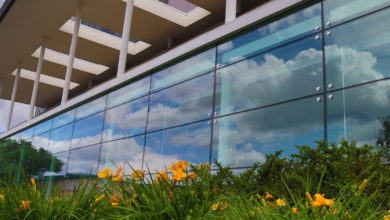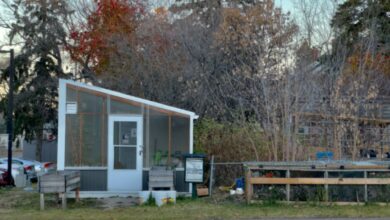U of A’s Ring Houses scheduled to be disassembled and relocated in May 2022
The buildings are arranged to be relocated and repurposed in May 2022 by Primavera Development Group, while the old site will remain green space until future redevelopments are planned by the U of A.
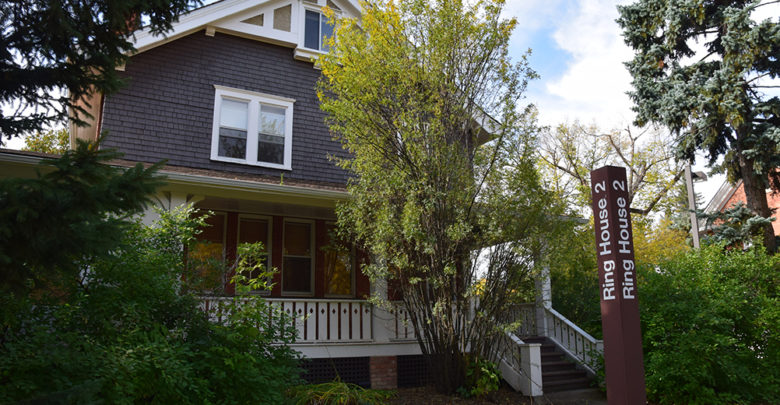 University of Alberta
University of AlbertaThe century-old Ring Houses on the northwest corner of the University of Alberta campus were acquired by a real estate company — for one dollar each.
The buildings will be relocated and repurposed in May 2022 by Primavera Development Group, while the old site will remain green space until future redevelopments are planned by the U of A. Both sides of the deal have issued public updates officializing the acquisition, in spite of some backlash from the university community.
Relocation, repurposing, and associated costs responsibilities of the buyer; disassembly deemed necessary due to largeness of houses
The houses were acquired for one dollar each, largely because the buyer will be bearing the considerable cost of removal and repurposing.
According to Ken Cantor, President of the Primavera Development Group, if the Ring Houses are going to be removed from campus, they also have to be moved to a new location, which in turn means purchasing some very large lots big enough to rebuild them on.
“You can add to that the costs of new basements, new mechanical and electrical and plumbing systems as none of the existing meets current code … and the costs of providing new services for each of them,” he said.
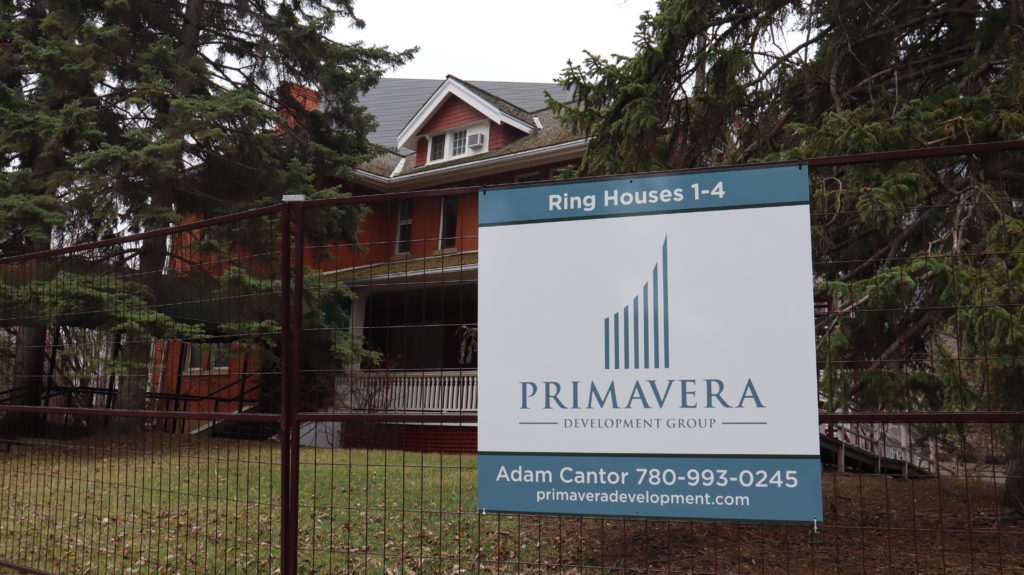
Cantor acknowledged the houses are unique heritage properties, but made the argument that the reduced financial stress the U of A will receive is notable. He believed there is no “windfall” for either Primavera and the U of A.
Cantor reassured that great effort will be made to minimize structural damage during relocation of the Ring Houses.
“While there has been much talk of ‘moving’ the Ring Houses, we have completed extensive research ultimately arriving at the conclusion that they cannot actually be moved,” he said. “They are simply too big, too tall, and too heavy … the only way to move them is to literally disassemble them first.”
Cantor explained the team Primavera Development Group assembled included a heritage architect, a structural engineer, a general contractor, and numerous tradespeople in addition to their own resources. Their review and analysis built upon a number of condition and assessment reports previously completed for the university; they have also toured one of the previously relocated Ring Houses and will be incorporating some of those changes.
“Any damage … to components that have the potential to be reused diminishes the … value of what we have purchased — so we will be making every reasonable effort to minimize [damage] as we set on-site best practices for handling and for safety,” Cantor said.
Historical significance of the ring houses deeply valued by community, who disapprove of the ‘lack of consultation’ by the university
The decision to sell the Ring Houses has received notable pushback from some members of the university community.
Connor Thompson is a researcher and representative from the Ring House Coalition, a group of historians, heritage experts, architects, and community members concerned about the fate of the Ring Houses. Established in February 2021 right after the demolition announcement, the Ring House Coalition advocated for a one-year moratorium on the demolition and removal of the buildings.
Thompson described feeling dismayed after hearing the announcement.
“Part of what’s important about these houses is the sense of place on the university campus,” he said. “That location is important to understanding what these houses are and what they mean and their connection with the university … that sense of place is lost forever if you take those houses away.”
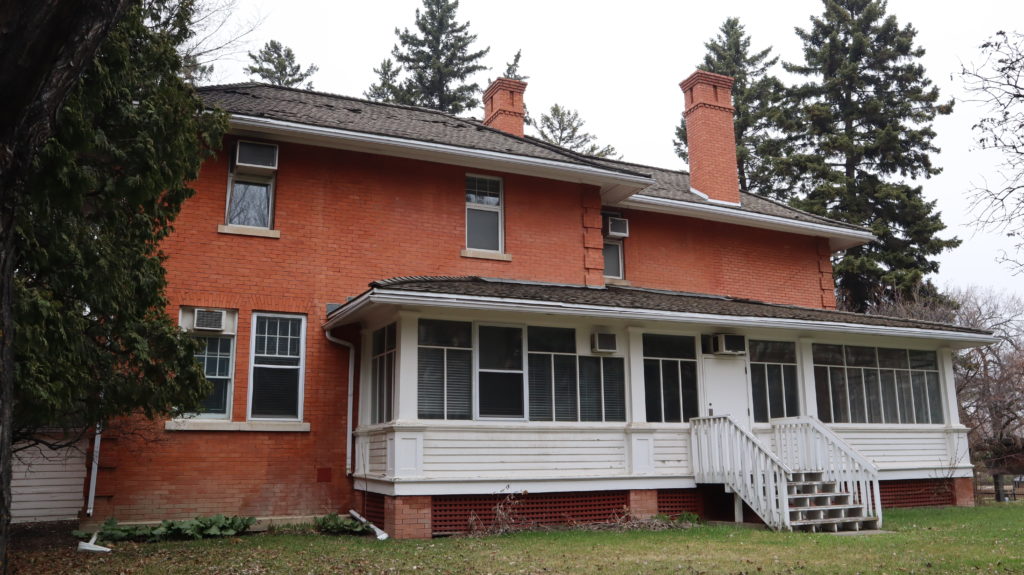
“The Ring Houses are some of the most historically significant buildings at the U of A,” Thompson said.
He stressed the Ring Houses have always been an integral part of the university’s history.
“In terms of the presidents and the faculty that lived in these buildings they are so tremendously significant; but then, even after they stopped being used as residences, there were other significant organizations that were housed in the Ring Houses,” Thompson said.
“[There is] just an immense degree of historical significance that’s encapsulated in these buildings.”
He also mentioned that the houses provide a sense of “cozy corner” with the Faculty Club, maintaining incredibly close ties formed between them. The area has been a social gathering spot for students and community members for a very long time.
The absence of meaningful public consultation prior to the transaction was a main point of dispute.
Part of the reason the coalition was formed was in response to the lack of consultation that the university had done. The Ring House Coalition created a petition that, to date, has been signed by approximately 2,600 people calling for a moratorium.
According to the U of A, the relevant regulation currently does not require mandatory consultation on circumstances such as removing the Ring Houses.
As explained by a university spokesperson, the Post-Secondary Learning Act’s Land Use Regulation details the requirement of universities to develop a long-range development plan that describes current and any future substantial development proposed for university land.
The regulation contains specific provisions related to the university’s obligation to consult, however such consultation is limited to elements of “substantial development,” according to the university’s statement. The removal of buildings such as the Ring Houses does not constitute substantial development, according to the regulation.
In response to the university’s claim that they are not required to consult in this scenario, Thompson said universities should be leaders in the community, and hold themselves to the highest standards of historical preservation and community awareness.
“Just because they are not required to consult doesn’t mean they can’t do it,” he said. “The university has effectively ignored the call of thousands of community members, alumni, students, and faculty to consider other options for the Ring Houses.
Cases with similar issues in other Canadian post-secondary institutions
“Unfortunately, it’s often easy from the perspective of the university to destroy heritage buildings,” Thompson said. “It can be expensive to maintain these buildings and certainly the U of A has financial constraints, but there are also lots of examples where universities are very proud of their heritage buildings.”
Thompson mentioned examples of well-arranged and national award-winning heritage management at University of British Columbia and Queen’s University.
“In all fairness, the U of A has done a great job of maintaining some of their historic buildings, like these ones on [Main] Quad, but I don’t think that should be used as an excuse to say ‘we can demolish this building because we have all these existing heritage buildings.’”
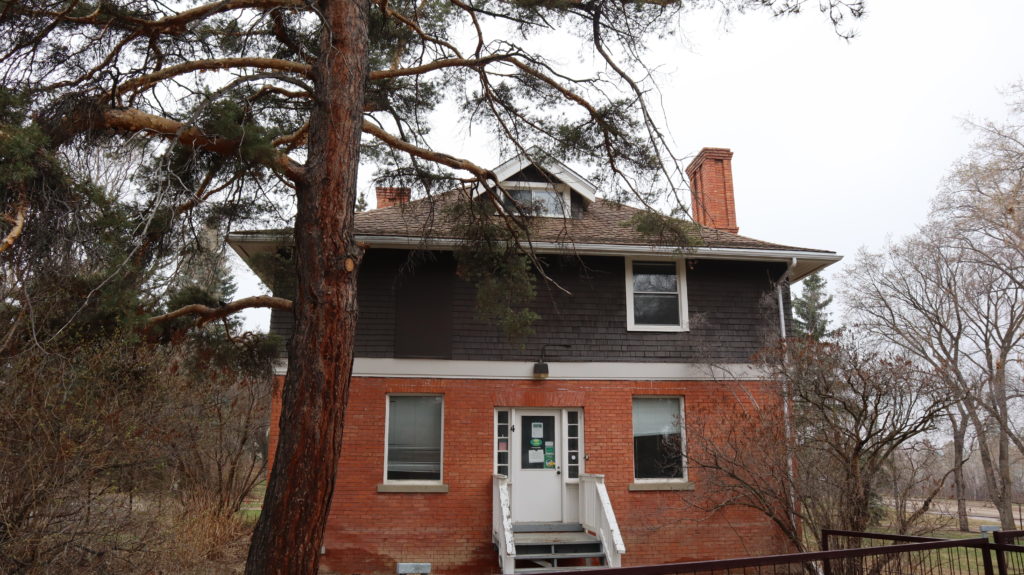
When asked what he hopes the university does differently with similar cases in the future, Thompson mentioned a greater degree of consultation as well as a change in the attitude towards heritage properties.
“To some extent, there needs to be a bit of a change in principle,” he said. “Buildings only get older over time, and heritage buildings in particular shouldn’t be seen just as a bottom line or an asset. They should be seen as a significant part of the very identity of the university.”
Thompson reiterated that he agrees that Primavera’s hearts are in the right place, but the significance of these buildings is multilayered. For Thompson, even if the bricks and the physical elements of the buildings are retained, the sense of place is being lost forever if the buildings are moved.
Reconstructive transformation into mixed-use artistic hub envisioned by new owner
According to Cantor, the Ring Houses are not intended to be a typical “market” development project for Primavera; rather, their intention is to reconstruct the houses as best they can, with respect for their past and future.
Cantor said the Ring Houses were intentionally purchased as a package, instead of them being split up.
“They were built as a community and it is our intention to reconstruct them as a community that will respect that part of their history and their relationships with each other.”
Cantor also offered thoughts on future possibilities and their visions for the houses.
Primavera envisions a provision of “Sculptor in Residence” spaces as part of their goal to create an Edmonton sculpture “Centre of Excellence,” in the same manner as McLuhan House operates, but with the additional ability to offer residential space for international as well as local artists and their families.
While the primary focus is on sculpture, depending on the final location of the Ring Houses this could expand to include other art forms including musicians, actors, or curators in residence.
“Conceptually, if you could take Minneapolis’s Casket Arts District, the Digital Stone Project in Italy, the Rodin Museum and Garden in Paris, the Edmonton Sculpture Project, a restaurant or cafe, gift shop, and day care — throw it all into a blender and pour it into and around the Ring Houses, that’s what we’re planning to create,” Cantor explained.
Cantor also believes there is some potential for ongoing future involvement at the operational and the board level for the U of A, the Art Gallery of Alberta, the municipality, and other groups such as Edmonton’s Public Arts Committee that would continue some of the historical connections.
“While there is still a lot of work involved as we move forward with this, we continue to recognize that for many this will still not represent the best story that might be told for the Ring Houses,” Cantor concluded. “While that story was never there for us to write, what we are looking forward to is writing the second-best story we can for them.”

